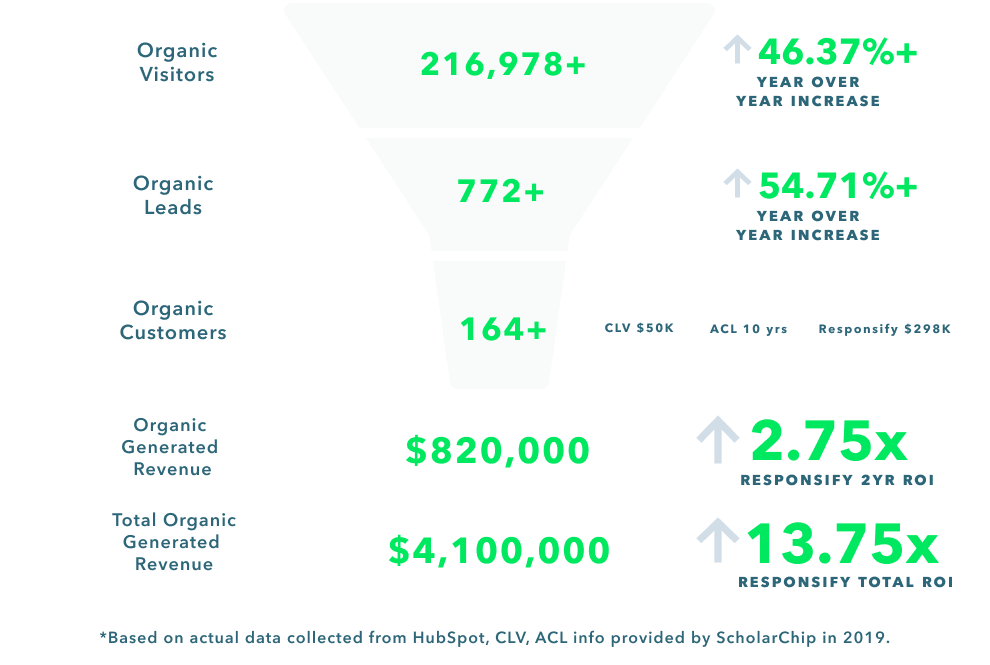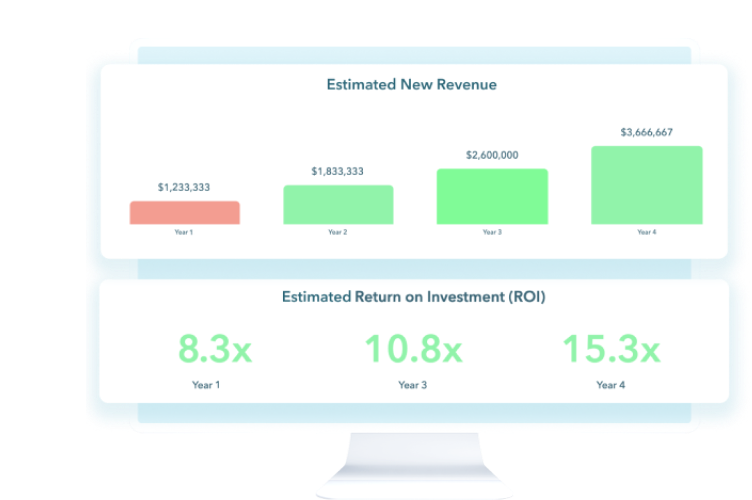 1,406 views
1,406 views October 1, 2025
October 1, 2025 447 Views
447 Views  6 min read
6 min readSelecting the right inbound marketing services and partner represents one of the most critical strategic decisions a CEO can make. This guide cuts through the marketing jargon to provide executives with a framework for evaluating potential partners based on what matters most: measurable business outcomes, sustainable growth, and strategic alignment with your company’s objectives.
For CEOs with ambitious growth targets, inbound marketing presents a unique value proposition that traditional methods cannot match. Unlike outbound tactics that disrupt potential customers, inbound marketing attracts qualified prospects who are already seeking solutions like yours. This results in higher conversion rates and more efficient customer acquisition costs.
Inbound marketing’s strategic advantages extend beyond immediate lead generation. It builds lasting digital assets—optimized content, search rankings, and brand authority—that generate returns long after initial investments. This approach creates predictable, scalable growth engines that align perfectly with executive priorities around ROI accountability and long-term value creation, providing a reliable path to your business’s future.
Modern CEOs recognize that quality trumps quantity in lead generation. Inbound marketing’s focus on educating and nurturing prospects through the buyer’s journey produces higher-intent leads with shorter sales cycles and greater lifetime value. This translates directly to improved sales efficiency and more predictable revenue streams—metrics that matter.
Responsify understands that CEOs need marketing partners who think like business strategists, not campaign executors. Our approach centers on three core principles that resonate with executive decision-making: data-driven strategy, measurable outcomes, and scalable systems.
Rather than treating marketing as a creative exercise, Responsify operates as your strategic growth partner. We begin every engagement by understanding your business model, competitive landscape, and growth objectives. This executive-level perspective ensures that every marketing initiative directly supports broader business goals, whether market expansion, customer retention, or preparing for investment rounds.
As your business grows, our strategies and processes evolve to match your expanding needs, ensuring that your marketing capabilities remain a competitive advantage rather than a growth constraint.
Inbound marketing represents a fundamental shift from the interruption-based tactics that have dominated business development for decades. While traditional marketing pushes messages out to broad audiences through advertising, cold calling, and direct mail—hoping to capture attention at the right moment—inbound marketing operates on an entirely different premise: attracting prospects actively seeking solutions.
At its core, inbound marketing is permission-based engagement. Instead of interrupting potential customers during their daily routines, this approach creates valuable resources that prospects willingly consume when they’re ready to learn, evaluate, or purchase. This buyer-centric model aligns marketing efforts with natural customer behavior, resulting in more qualified leads and higher conversion rates.
Inbound marketing is not simply a rebranding of ‘digital marketing’ or ‘content marketing’. While many agencies position basic blogging or social media management as inbound marketing, the true strategy requires a sophisticated understanding of buyer psychology, search behavior, and conversion optimization. It’s a systematic approach that positions your company as the trusted resource prospects turn to throughout their decision-making process.
The strategic distinction lies in market positioning. Traditional marketing often relies on competitive messaging—highlighting why your solution is better than alternatives. Inbound marketing focuses on educational leadership—establishing your company as the definitive expert that helps prospects understand their challenges and available solutions. This positions you as a strategic advisor who guides buying decisions rather than simply pitching products.
For executives evaluating marketing approaches, the buyer-centric model offers compelling advantages. Inbound marketing naturally generates higher-quality leads because prospects self-qualify by engaging with your content. Someone downloading your industry analysis report or attending your educational webinar demonstrates genuine interest and buying intent. This pre-qualification means your sales team spends time with prospects who are more likely to convert, improving sales efficiency and reducing customer acquisition costs.
The long-term value creation aspect particularly appeals to growth-focused CEOs. Every piece of strategic content becomes a digital asset, attracting and converting prospects over time. Unlike traditional advertising that stops generating results when you stop paying, inbound marketing creates compounding returns as your content library grows and your search rankings improve.
These five components work together to create a comprehensive funnel that attracts, engages, and converts prospects.
Content strategy is your foundation—it defines what you’ll create and how it aligns with your audience’s needs and buyer journey stages. This drives everything else.
SEO and blogging work hand-in-hand to increase your discoverability. Quality blog content optimized for search helps you capture organic traffic from people actively searching for your solutions.
Email nurturing keeps prospects engaged over time, especially important since most people don’t convert immediately. It lets you build relationships and provide value while gently guiding prospects toward a purchase decision.
Conversion optimization ensures you maximize the value of the traffic you’re attracting. Minor improvements to landing pages, forms, and calls-to-action can significantly impact your results.
Analytics and CRM integration tie it all together by tracking what’s working, attributing revenue to specific activities, and enabling personalized follow-up based on prospect behavior.
The beauty of this approach is how these elements reinforce each other – your content feeds your SEO efforts, your analytics inform your content strategy, and your CRM data helps you optimize email sequences.
Key Performance Indicators (KPIs) are crucial for marketing success, and selecting the correct ones greatly impacts your strategic results. Start by establishing clear marketing goals. Each objective, be it increasing brand visibility, driving sales, or fostering customer loyalty, will have specific KPIs that accurately gauge its effectiveness.
Revenue impact is the ultimate scorecard. CEOs want to see direct attribution between inbound efforts and closed deals, not just vanity metrics like page views or social followers.
Pipeline growth shows the health of future revenue. A CEO needs confidence that the sales team will have quality opportunities to work within the coming quarters, and inbound should be feeding that pipeline consistently.
CAC is where inbound marketing shines compared to traditional channels. When done well, inbound typically delivers much lower acquisition costs than paid advertising or outbound sales, especially as content compounds over time.
Over two years, one client experienced substantial growth, including a 46.37%+ increase in organic visitors and a 54.71%+ rise in organic leads year-over-year. This generated 164 organic customers, resulting in over $820,000 in organic revenue in the first year and more than $4,100,000 over the lifetime. Ultimately, this yielded a 13.75 return on investment.

This checklist captures exactly what separates elite inbound agencies from the commodity players. Each point addresses a standard failure mode that wastes the CEO’s time and budget.
Strategic alignment is non-negotiable because most agencies get caught up in marketing theater—beautiful campaigns that don’t move business metrics. The best agencies start every conversation with revenue targets and work backward to marketing activities, not the other way around.
Proven track records matter more in inbound than almost any other marketing discipline because results compound over months, not days.
Technology stack expertise becomes critical as your inbound program matures. Amateur implementations of HubSpot or Salesforce create data silos, broken attribution, and frustrated sales teams. Top-tier agencies architect systems that scale with your business.
Content expertise for complex sales cycles is where most agencies fail spectacularly. They create blog posts optimized for traffic, not conversion. Elite agencies understand how to create content that moves prospects through 6-12 month consideration periods, addressing different concerns at each stage.
Ongoing optimization separates the professionals from the project-based vendors. Inbound marketing is never “done”—audience behaviors shift, competitive landscapes change, and algorithms evolve. The best agencies treat your program like a living system that requires constant refinement based on performance data.
These questions are designed to expose the pretenders quickly. Each one targets a specific area where mediocre agencies typically stumble.
The alignment question reveals whether they think tactically or strategically. Weak agencies talk about “driving traffic” or “increasing engagement.” Strong ones ask about your sales process. They should want to understand your sales team’s biggest challenges and how marketing can solve them.
The success measurement question separates data-driven agencies from those chasing vanity metrics. Look for answers that mention revenue and pipeline contribution—not social media followers.
The continuous improvement process question is crucial because inbound marketing requires constant iteration. Agencies that can’t articulate a systematic approach to testing, measuring, and optimizing are gambling with your budget. You want to hear about quarterly reviews, A/B testing, and how they pivot when strategies aren’t working.
Communication is where many client relationships break down. Agencies should explain how they’ll translate marketing performance into business language your leadership team understands.
The tailoring question forces them to demonstrate industry knowledge and strategic thinking. Generic “best practices” rarely work in complex B2B environments. They should ask probing questions about your specific market dynamics, buyer personas, and competitive landscape before pitching solutions.
The focus on strategic, measurable marketing addresses a fundamental frustration CEOs often have with marketing—the lack of a clear link between marketing efforts and business outcomes.
CEOs don’t want another service provider sending monthly reports—they want a partner who understands their business challenges and takes ownership of outcomes.
Choosing the right inbound marketing partner isn’t just about marketing tactics; it’s about finding someone who can accelerate business growth through strategic, measurable efforts.
Responsify aligns inbound marketing efforts directly with business goals and KPIs that matter to CEOs. We cover the full spectrum of inbound marketing components – content strategy, SEO and blogging, email nurturing, conversion optimization, and analytics/CRM integration – with particular expertise in B2B sales cycles.
Ready to see how strategic inbound marketing can accelerate your revenue growth? Let’s discuss your specific goals and challenges.
Inbound marketing directly impacts revenue growth by attracting qualified leads, lowering customer acquisition costs, and improving sales efficiency. As CEO, choosing the right partner ensures alignment with your business goals and long-term ROI.
Top providers go beyond blog posts—they offer full-funnel strategies, advanced analytics, marketing-sales alignment, proven industry results, and a strategic approach that supports business growth, not just marketing output.
Look for transparent KPIs tied to revenue outcomes (not just traffic), case studies with real results, and performance dashboards. A strong agency will help you track the full lead journey—from first touch to closed deal.
Top inbound partners act as an extension of your internal team. They fill capability gaps, provide strategic leadership, or handle execution—depending on your in-house bandwidth and goals.
Watch out for:
Yes. A strategic partner builds thought leadership and brand authority while driving measurable lead and pipeline growth—balancing long-term brand equity with short-term revenue impact.
Top agencies tailor strategies through in-depth discovery, competitive analysis, and persona research. This allows them to build custom content and campaigns that align with your sales process, decision-maker roles, and growth stage.
